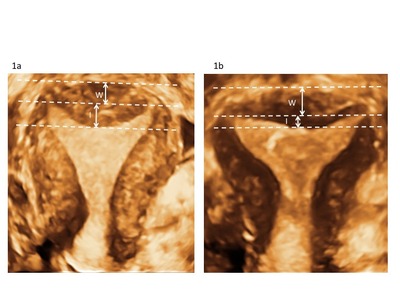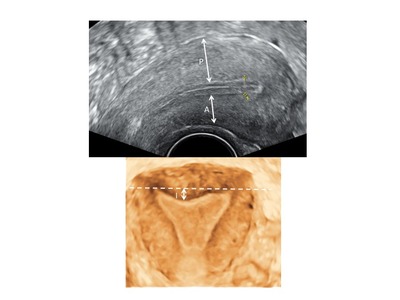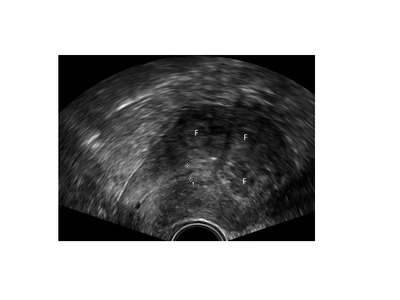Knez, J;
Saridogan, E;
Van den Bosch, T;
Mavrelos, D;
Ambler, G;
Jurkovic, D;
(2018)
ESHRE/ESGE female genital tract anomalies classification system—the potential impact of discarding arcuate uterus on clinical practice.
Human Reproduction
, 33
(4)
pp. 600-606.
10.1093/humrep/dey043.

Preview |
Text (Article)
Ambler_Editorial-Changes_Reply.pdf - Accepted Version Download (367kB) | Preview |
Preview |
Text (Tables)
Ambler_ESHRE_anomalies_Tables.pdf - Accepted Version Download (284kB) | Preview |
![[thumbnail of Figure_1_R1.jpg]](https://discovery.ucl.ac.uk/10048250/5.hassmallThumbnailVersion/Figure_1_R1.jpg)  Preview |
Image
Figure_1_R1.jpg - Accepted Version Download (75kB) | Preview |
![[thumbnail of Figure_2_R1.jpg]](https://discovery.ucl.ac.uk/10048250/10.hassmallThumbnailVersion/Figure_2_R1.jpg)  Preview |
Image
Figure_2_R1.jpg - Accepted Version Download (54kB) | Preview |
![[thumbnail of Figure_3_R1.jpg]](https://discovery.ucl.ac.uk/10048250/15.hassmallThumbnailVersion/Figure_3_R1.jpg)  Preview |
Image
Figure_3_R1.jpg - Accepted Version Download (46kB) | Preview |
Abstract
STUDY QUESTION What would be a potential impact of implementing the new ESHRE/European Society of Gynaecological Endoscopy (ESGE) female genital anomalies classification system on the management of women with previous diagnosis of arcuate uteri based on the modified American Society for Reproductive Medicine (ASRM) criteria? SUMMARY ANSWER A significant number of women with previous diagnosis of arcuate uteri are reclassified as having partial septate uteri according to the new ESHRE/ESGE classification system which may increase the number of remedial surgical procedures. WHAT IS KNOWN ALREADY The ESHRE/ESGE classification system has defined measurement techniques, reference points and specific cut-offs to facilitate the differentiation between normal and septate uteri. These criteria have been arbitrarily defined and they rely on the measurement of uterine wall thickness and depth of distortion of uterine fundus. STUDY DESIGN, SIZE, DURATION This was a retrospective cohort study. We searched our ultrasound clinic database from January 2011 to December 2014 to identify all women diagnosed with arcuate uterus on three-dimensional ultrasound according to the modified ASRM criteria. PARTICIPANTS/MATERIALS, SETTING, METHODS For each woman, the ultrasound images were stored in our clinical database and they were re-examined according to ESHRE/ESGE specifications. The presence and location of all acquired uterine anomalies, such as fibroids or adenomyosis was noted. We applied the two diagnostic approaches as specified by the ESHRE/ESGE classification: the main option (MO) and the alternative option (AO). We used the Kappa statistic to quantify the agreement between the two approaches. We also compared the number of previous miscarriages in women with normal and partial septate uteri according to the ESHRE/ESGE classification. Non-parametric Mann–Whitney and Kruskal–Wallis tests were used for the analyses and receiver-operating characteristic curves were constructed to assess the predictive values of the calculated uterine distortion indices for the detection of women at risk of suffering multiple pregnancy losses. MAIN RESULTS AND THE ROLE OF CHANCE We included 270 women diagnosed with arcuate uterus in the study. In all, 77 women (28.5%, 95% confidence interval (CI) 23.1–33.9) had evidence of fibroids or adenomyosis. These abnormalities precluded the application of either proposed ESHRE/ESGE techniques to assess uterine morphology in 25 women (9.3%, 95% CI 5.8–12.7). When using the MO, 138/237 (58.2%, 95% CI 51.9–64.3) women were diagnosed with partial septate uterus compared to 61/230 (26.5%, 95% CI 21.2–32.6) women when using the AO. In 222 women in whom we were able to apply both MO and AO, there was agreement in the diagnosis of septate uterus between the two techniques in 146/222 cases (65.8%, 95% CI 59.3–71.7; Kappa 0.42, 95%CI 0.35–0.5). There was no statistical difference in the proportion of women with history of previous multiple miscarriages between those diagnosed with normal or partial septate uteri using either MO (6.2%, 95% CI 2.9–12.9 vs. 9.5%, 95% CI 5.6–15.6; P = 0.47) or AO (7.2%, 95% CI 4.2–12.1 vs. 11.7%, 95% CI 5.8–22.2; P = 0.29). LIMITATIONS, REASONS FOR CAUTION This study was retrospective in nature and the definition of arcuate uterus used in the study is not universally accepted. The reproductive history data were collected retrospectively and therefore may be prone to bias. WIDER IMPLICATIONS OF THE FINDINGS There are methodological weaknesses in the new ESHRE/ESGE classification system which would need to be addressed in future revisions. There was no significant difference in the past reproductive outcomes between women diagnosed with normal and anomalous uteri and the clinicians should exercise caution when offering surgical correction to women diagnosed with partial septate uteri using the new ESHRE/ESGE classification. STUDY FUNDING/COMPETING INTEREST(S) No study funding was received and no competing interests are present.
Archive Staff Only
 |
View Item |


